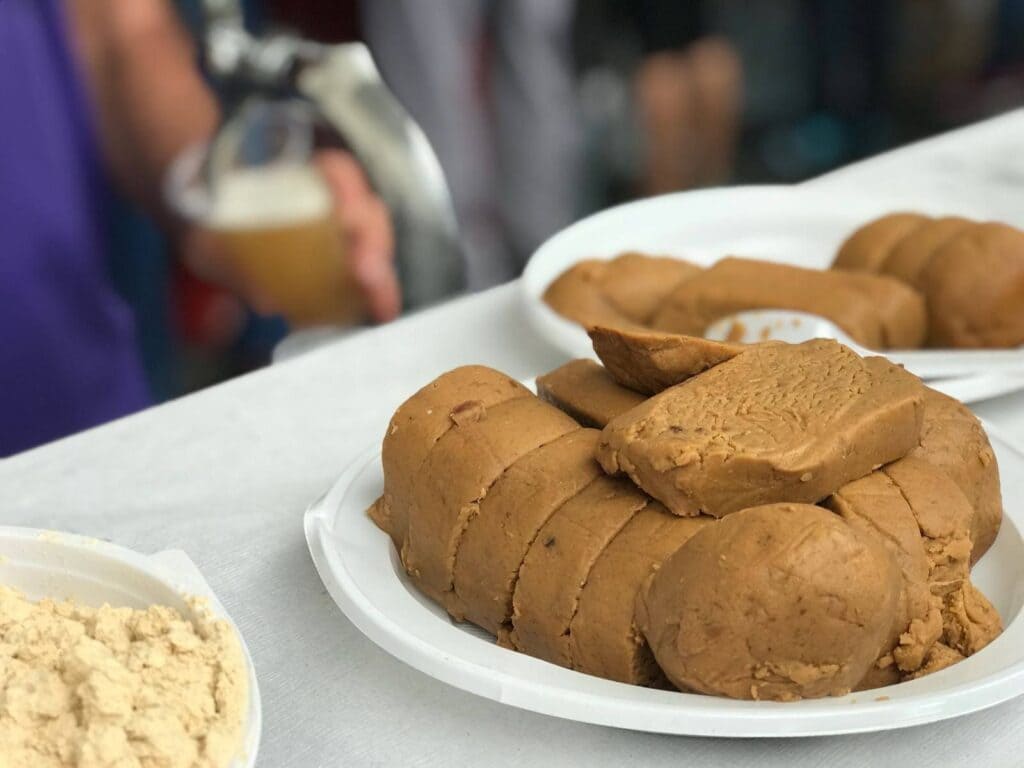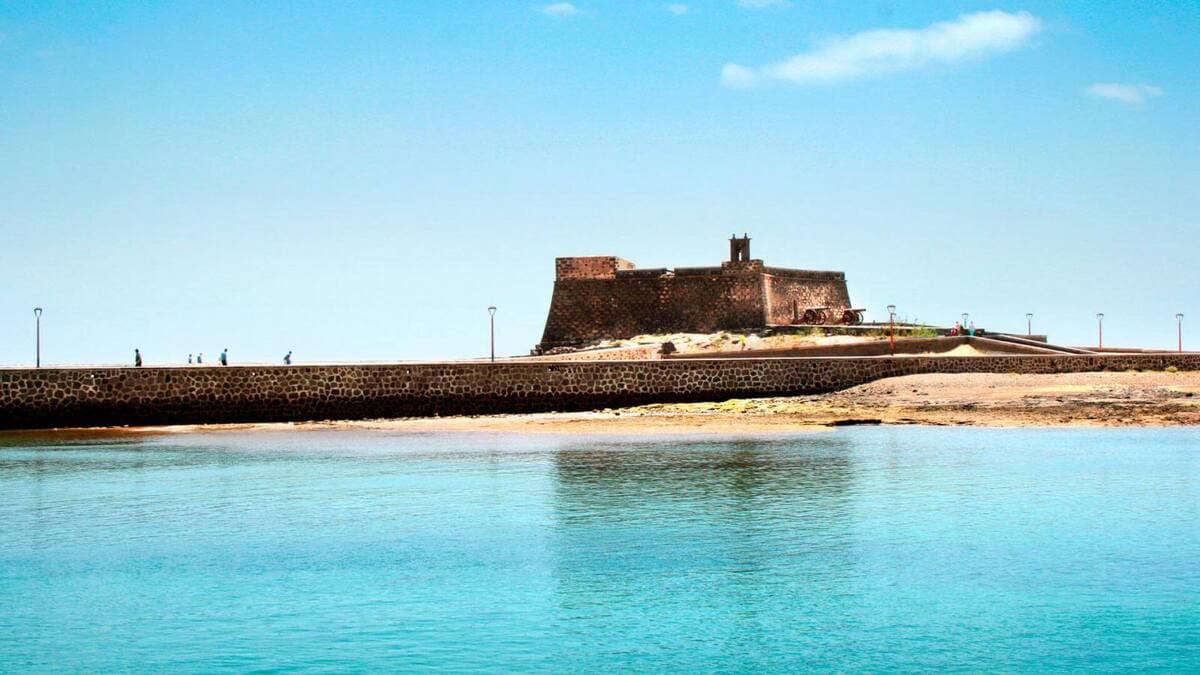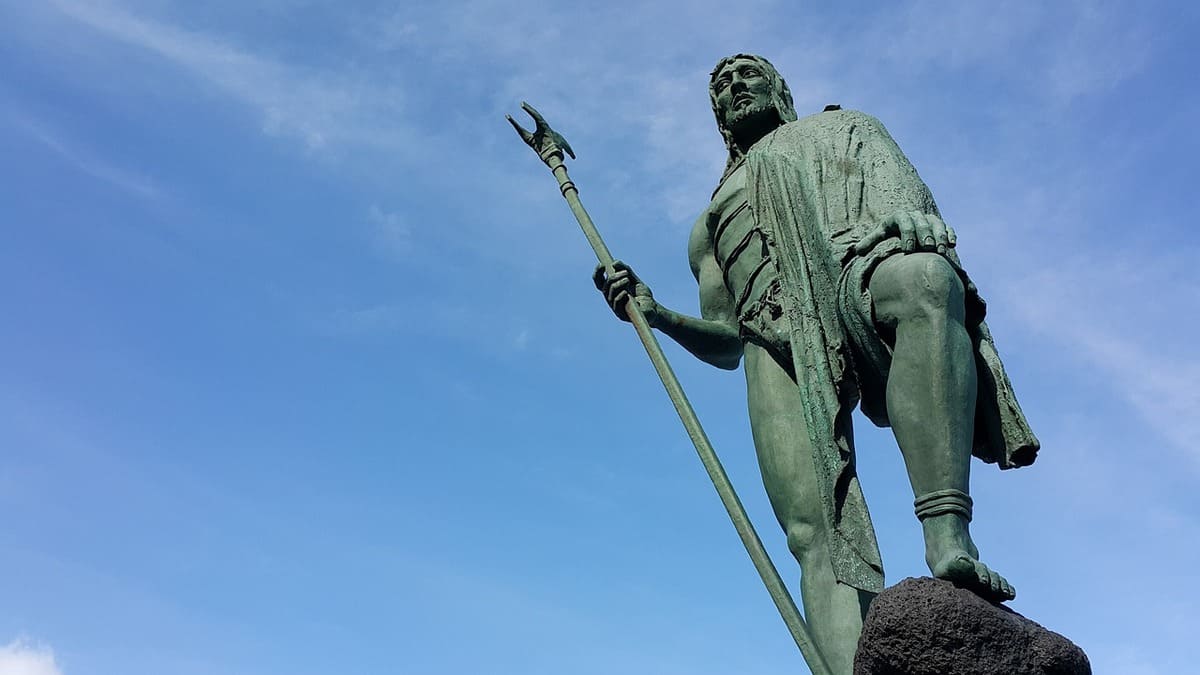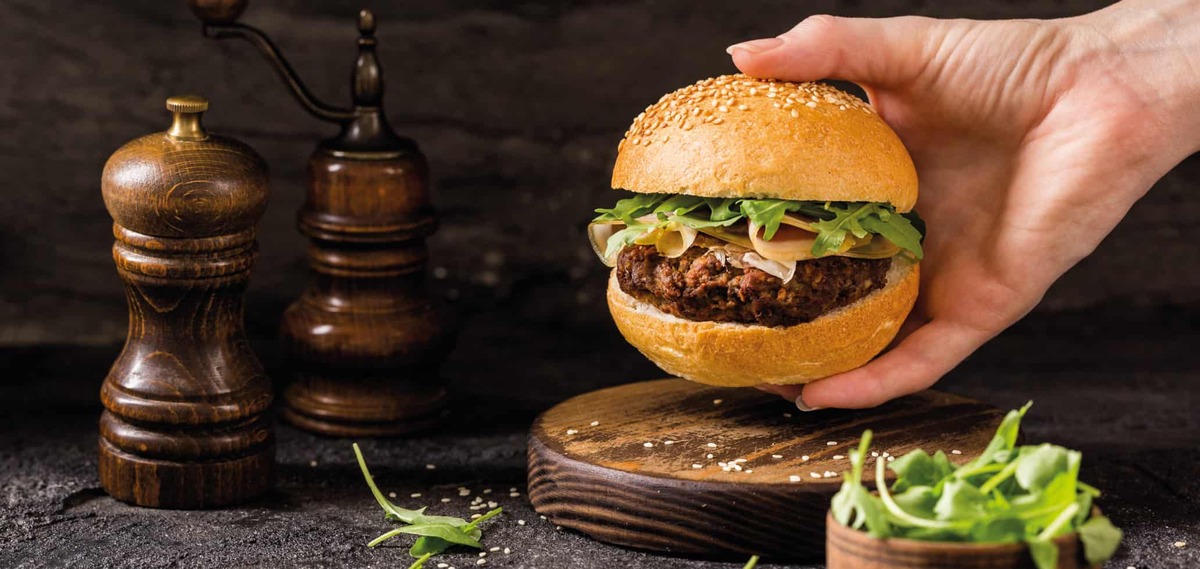Lucha Canaria is the most popular traditional sport practised in the archipelago. Its origins date back to the times of the first inhabitants of the islands and it was used by the Canarian aborigines on important occasions to resolve conflicts. Nowadays, it is categorised as a wrestling of pre-Hispanic origin and is included in the Spanish Wrestling Federation.
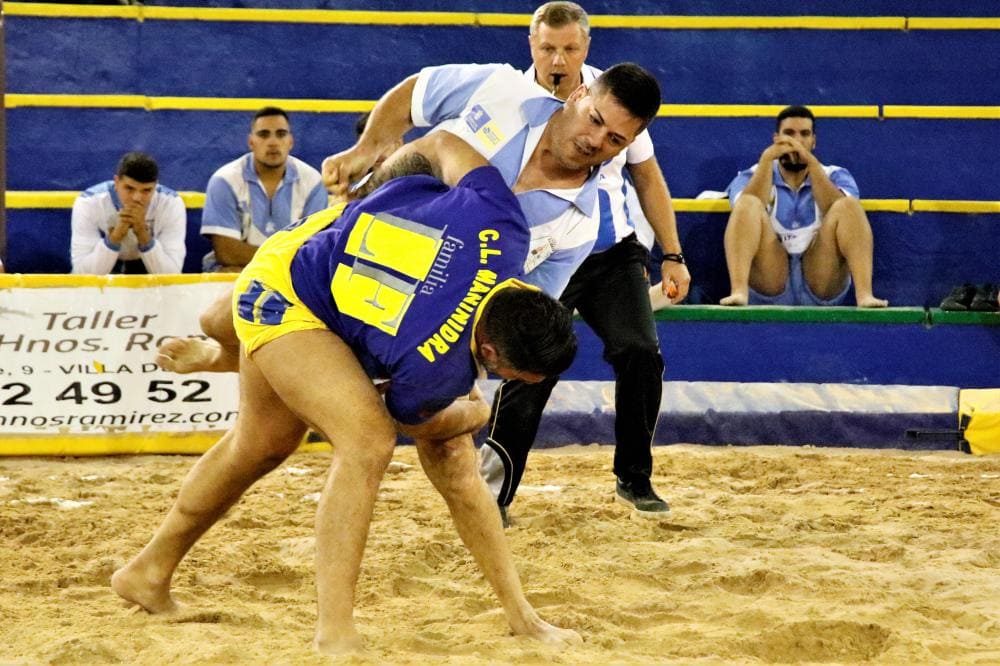
According to the technical regulations of Lucha Canaria approved in La Laguna (Tenerife) in 1989: "Lucha Canaria is a vernacular sport of the Canary Islands, characterised by its skill and nobility, having as its basic principle the unbalancing of the opponent until he touches the ground with any part of his body other than the sole of his foot, using the so-called mañas or techniques".
Therefore, the main characteristics of this sport are, on the one hand, the ability of the fighter to take advantage of the opponent's strength in combat and, on the other hand, the intention to unbalance the opponent without hurting him until he touches the ground.
The struggle and the mañas
The wrestling takes place between two opponents, who face each other on so-called "grounds". The wrestling grounds are circles of sand or clay where the wrestlers try to knock the opponent down, without going outside the limits drawn on the ground. The wrestling or "brega" begins when the two opponents get into a grappling position: left hand - right trousers. In the following minute and a half and without leaving the ground, they must unbalance the opponent, without being able to hit or use keys, only with the help of the so-called mañas.
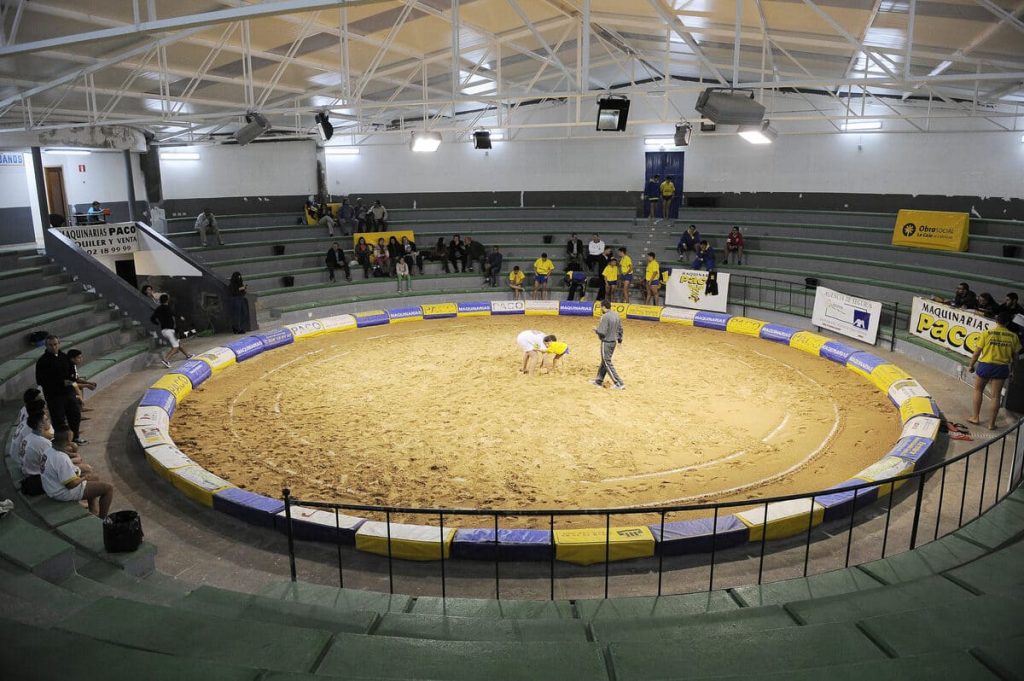
The mañas are techniques that can be categorised into several groups: grabbing, in which the opponent is grabbed and lifted by weight; those known as cogidas; blocking, in which the arms and legs are used to block a part of the opponent's body; and deflecting, with which one tries to destabilise the other wrestler using one's own strength. There are other mañas, also called artes or geitos, which are very well known, such as: Burra, Cogida de Muslo, Cango, Pardelera, Toque por Dentro, Toque para atrás, Atravesada, Garabato, among others.
The team, the Prop and the Commander
Normally, in Lucha Canaria, two teams compete, made up of twelve wrestlers each, although this number can vary. The wrestlers are usually heavy and strong athletes. But in this sport, strength is not the only thing that matters, as it is necessary to control the different skills in order to win, as well as to study the opponent.
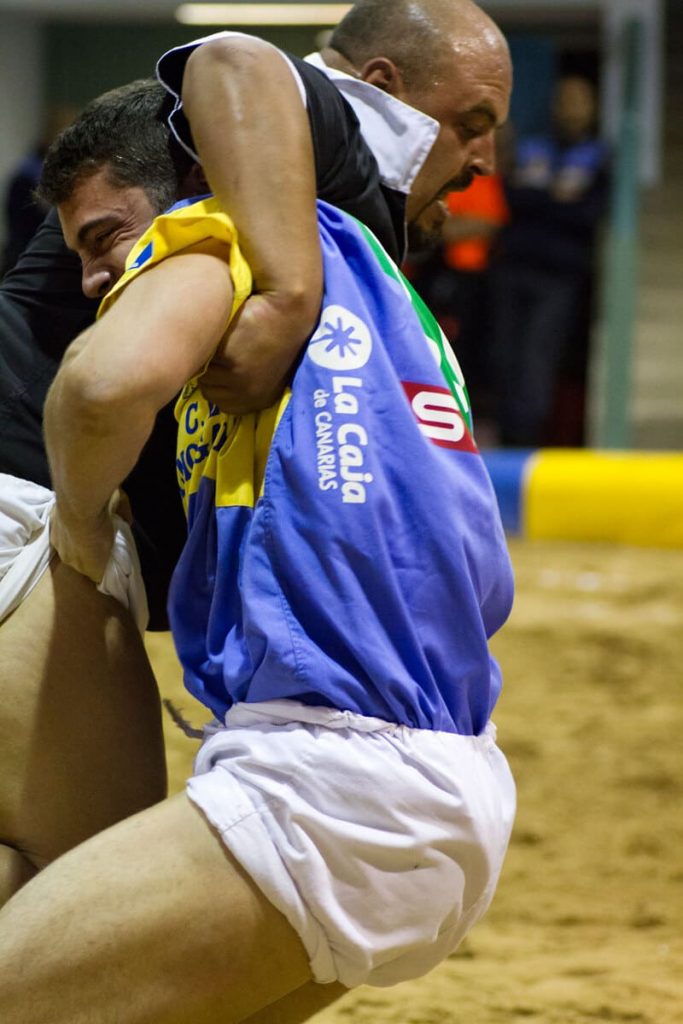
Within both teams there are two important figures: the Puntal and the Mandador. On the one hand, the Prop is the wrestler with the best technical and physical conditions. On the other hand, the Mandador is responsible for deciding which wrestler jumps onto the field. The wrestling match is won by the team that manages to keep the most wrestlers on their feet. There are also different types of wrestling. It can be team wrestling, three grappling, running wrestling or all against all, or individual matches divided by weight, category or challenge.
As in all sports, there are always sportsmen and women who stand out. In Lucha Canaria there have been important figures such as Francis Pérez or "Pollito de la Frontera", one of the most emblematic wrestlers of the end of the 20th century, whose dedication to this sport was commendable. In the following link you can access a video with the best moments of this great wrestler.
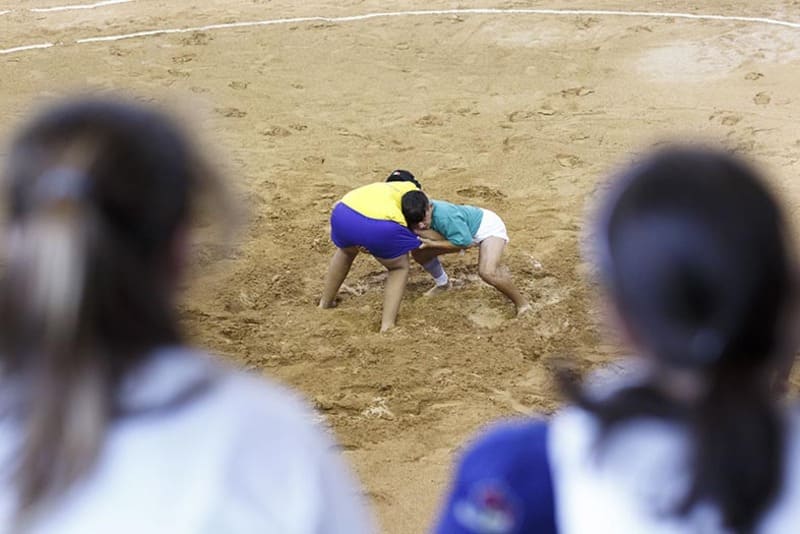
This sport, a hallmark of Canarian culture, is present throughout the archipelago. It is more popular in rural areas, but thanks to institutions and private companies, there are good arenas as well as wrestling clubs and schools. In addition, projects have been developed to establish exchanges with countries such as Venezuela and Cuba, where Lucha Canaria is still practised by immigrants of Canarian origin.
Lucha Canaria has been growing in terms of team structure, infrastructure and money invested. This has consolidated it as a sport rooted in the Canarian tradition that has been passed down from generation to generation.
By Paula Vera
Photos: Government of the Canary Islands, Disa Foundation, aguimes.es
